Table of Contents
- Clean and Simple Scrapbooking: Elegance in Minimalism
- Minimal Clutter
- Whitespace
- Straight Lines and Geometric Shapes
- Emphasis on Photos and Journaling
- Timelessness
- Versatility
- Efficiency
- Shabby Chic Scrapbooking: Vintage Beauty with a Tattered Edge
- Distressed Elements
- Antique and Vintage Embellishments
- Floral Patterns
- Layered Textures
- Romantic Nostalgia
- Artistic Expression
- Unique Storytelling
- Choosing Your Style: A Personal Journey
- The Story
- Personal Aesthetic
- Available Time
- Theme and Mood
Scrapbooking is a creative and cherished way to capture memories and tell stories through artistry. It’s a form of self-expression that allows individuals to blend their personal experiences with their unique design sensibilities. Two popular and distinct scrapbooking styles that have gained avid followings are “Clean and Simple” and “Shabby Chic.” In this article, we’ll delve into these two contrasting approaches, exploring the characteristics, techniques and the allure that each style brings to the world of scrapbooking.
Scrapbooking is an art form that goes far beyond mere documentation; it’s a heartfelt and creative journey through the memories that shape our lives. At its core, scrapbooking is about storytelling and two prominent styles— “Clean and Simple” and “Shabby Chic”—offer unique avenues for self-expression and narrative crafting within this beloved craft.
Clean and Simple: Streamlined Elegance
In the world of scrapbooking, the “Clean and Simple” style stands as a beacon of elegance and simplicity. It embodies a minimalist approach that emphasizes the beauty of clean lines, uncluttered layouts and a restrained color palette. Here, less is often more and each element serves a purpose.
Characteristics:
- Minimalistic design with ample white space.
- Crisp, uncluttered layouts that guide the eye.
- Focused on essential design elements.
- Limited color palette for a cohesive and modern look.
Allure: The “Clean and Simple” style appeals to those who appreciate the power of simplicity. It allows the photos and stories to take center stage, creating a visual narrative that is both sophisticated and accessible. It’s an ideal style for capturing contemporary moments and showcasing the beauty of everyday life.
Shabby Chic: Vintage Charm and Whimsy
In contrast, “Shabby Chic” scrapbooking is a delightful fusion of vintage charm and artistic whimsy. It draws inspiration from the past, incorporating distressed and aged elements to create layouts that exude nostalgia and warmth. This style is all about capturing the essence of cherished memories and stories with a touch of whimsical creativity.
Characteristics:
- Distressed, vintage-inspired backgrounds.
- Use of antique or aged embellishments.
- Incorporation of delicate, feminine details.
- Playful and eclectic arrangements.
Allure: “Shabby Chic” scrapbooking offers a sense of nostalgia and a connection to the past. It’s perfect for preserving memories with a touch of whimsy and enchantment, making it a favorite for family history projects, romantic tales and any memory imbued with a sense of vintage charm.
Choosing Your Style:
Ultimately, the choice between “Clean and Simple” and “Shabby Chic” scrapbooking styles is a reflection of your personal taste, the stories you wish to tell and the emotions you want to convey. Some scrapbookers may even blend elements of both styles to create a unique and hybrid approach that speaks to their individuality.
Whether you gravitate towards the streamlined elegance of “Clean and Simple” or the vintage charm of “Shabby Chic,” the heart of scrapbooking remains the same: preserving memories, sharing stories and celebrating life’s moments through the creative lens of artistry. Each style offers its own captivating journey into the world of scrapbooking, where cherished memories come to life on the pages of our personal narratives.
Additionally, you can find further information on this topic by visiting this page: Free and customizable introduction templates
Clean and Simple Scrapbooking: Elegance in Minimalism
The Clean and Simple (CAS) scrapbooking style is characterized by its minimalist approach and emphasis on simplicity and clarity.
Certainly! Here’s an extended idea:
“The Clean and Simple (CAS) scrapbooking style stands as a beacon of artistic minimalism, celebrated for its unwavering commitment to simplicity and clarity. In a world where visual noise often competes for attention, CAS scrapbooking offers a refreshing departure from the clutter, allowing the essence of your memories to shine through with elegance and poise.
At the heart of CAS scrapbooking lies the art of subtraction. It’s not about what you add but what you choose to leave out. The deliberate use of white space, also known as negative space, becomes a powerful design element. It allows your photos, journaling and chosen embellishments to breathe, commanding attention and fostering a sense of tranquility on the page.
The mantra of ‘less is more’ is the guiding principle here. Each element on a CAS layout is carefully curated, with a focus on quality over quantity. This restraint extends to color palettes, with muted and harmonious hues often taking center stage. The result is a visual harmony that brings out the essence of your photos and stories, emphasizing the emotional impact of your memories.
Simplicity doesn’t equate to monotony in CAS scrapbooking. In fact, it’s a style that challenges your creativity to make every element count. The choice of fonts for journaling, the selection of a single, meaningful embellishment and the precision of your photo placement all contribute to the overall impact of your layout. It’s about creating a page that is aesthetically pleasing while allowing the viewer to connect deeply with the story being told.
One of the key advantages of CAS scrapbooking is its accessibility. It’s a style that welcomes beginners with open arms, as it doesn’t require an extensive collection of materials or complex techniques. A few well-chosen supplies, a focus on design principles and a heartfelt story are all you need to create stunning CAS layouts that resonate with authenticity.
CAS scrapbooking also offers a canvas for experimentation. While it is rooted in minimalism, there is room for subtle deviations from the ‘rules.’ Whether it’s a touch of mixed media, a clever use of negative space or a pop of unexpected color, CAS can adapt to your evolving artistic preferences while maintaining its core principles.
In the fast-paced digital age, CAS scrapbooking stands as a timeless reminder of the beauty found in simplicity. It allows you to declutter the visual noise of modern life and celebrate the essence of your memories with grace and sophistication. It’s a style that invites you to slow down, appreciate the power of subtlety and let your stories take center stage.
In conclusion, the Clean and Simple (CAS) scrapbooking style is a masterclass in artistic minimalism, valuing simplicity and clarity above all else. It’s a style that not only captures the essence of your memories but also offers a peaceful oasis amidst the chaos of our visual world. With CAS, less truly becomes more and your stories are given the opportunity to shine with timeless elegance.”
For additional details, consider exploring the related content available here Page 2 – Free photo collage poster templates to use and print | Canva
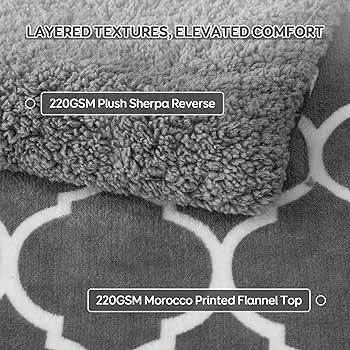
Minimal Clutter
CAS layouts tend to have fewer embellishments and decorative elements, focusing on the essentials.
CAS (Clean and Simple) layouts in the world of scrapbooking and cardmaking are a style choice that’s gained popularity for its elegant simplicity and focus on the essentials. This style offers a refreshing departure from the often intricate and heavily embellished designs, providing a clean canvas to let the subject matter shine. Here’s why CAS layouts are cherished by many crafters:
1. Emphasis on the Core: CAS layouts cut through the noise and bring your primary message into sharp focus. By limiting embellishments and decorative elements, the core of your project takes center stage. Be it a striking photograph, heartfelt sentiment or a powerful quote, CAS allows these elements to speak with clarity and impact.
2. Versatile and Time-Efficient: CAS layouts are highly versatile and adaptable. Whether you’re creating a greeting card, a scrapbook page or any other paper craft, the CAS style can be applied to suit your project’s needs. Moreover, the simplicity of this style often means quicker crafting sessions, making it ideal for those times when you want to create something beautiful but have limited time.
3. Aesthetically Pleasing: The minimalistic approach of CAS layouts has an inherent aesthetic appeal. The clean lines, uncluttered spaces and judicious use of negative space create a sense of balance and harmony. This simplicity can be visually striking and elicits a sense of calm and elegance.
4. Enhanced Storytelling: While CAS layouts may appear minimal, they are highly effective at conveying a story or a message. By stripping away distractions, CAS allows for a more profound connection between your project and its audience. It’s a storytelling technique that lets the viewer engage more deeply with the content.
5. Creative Challenge: Crafting in the CAS style can be a delightful challenge for those who enjoy pushing their creative boundaries. The simplicity encourages crafters to think creatively about how to convey emotions, themes and ideas using a limited set of design elements. It’s an opportunity to experiment with composition, color and typography to achieve powerful results.
6. Ideal for Special Occasions: CAS layouts are often preferred for projects that require a touch of sophistication and elegance, such as wedding invitations, sympathy cards or milestone scrapbook pages. These occasions call for a design that is tasteful and respectful, which CAS excels at providing.
In the world of crafting, where embellishments and decorative elements often take center stage, CAS layouts stand out as a refreshing and impactful choice. They prove that sometimes, less is indeed more and that by focusing on the essentials, you can create stunning projects that leave a lasting impression. So, whether you’re new to CAS or a seasoned enthusiast, embrace the art of simplicity and let your projects shine with elegance and clarity.
If you’d like to dive deeper into this subject, there’s more to discover on this page: Material World Home Decor Projects For The Fabric ? – web.mei.edu
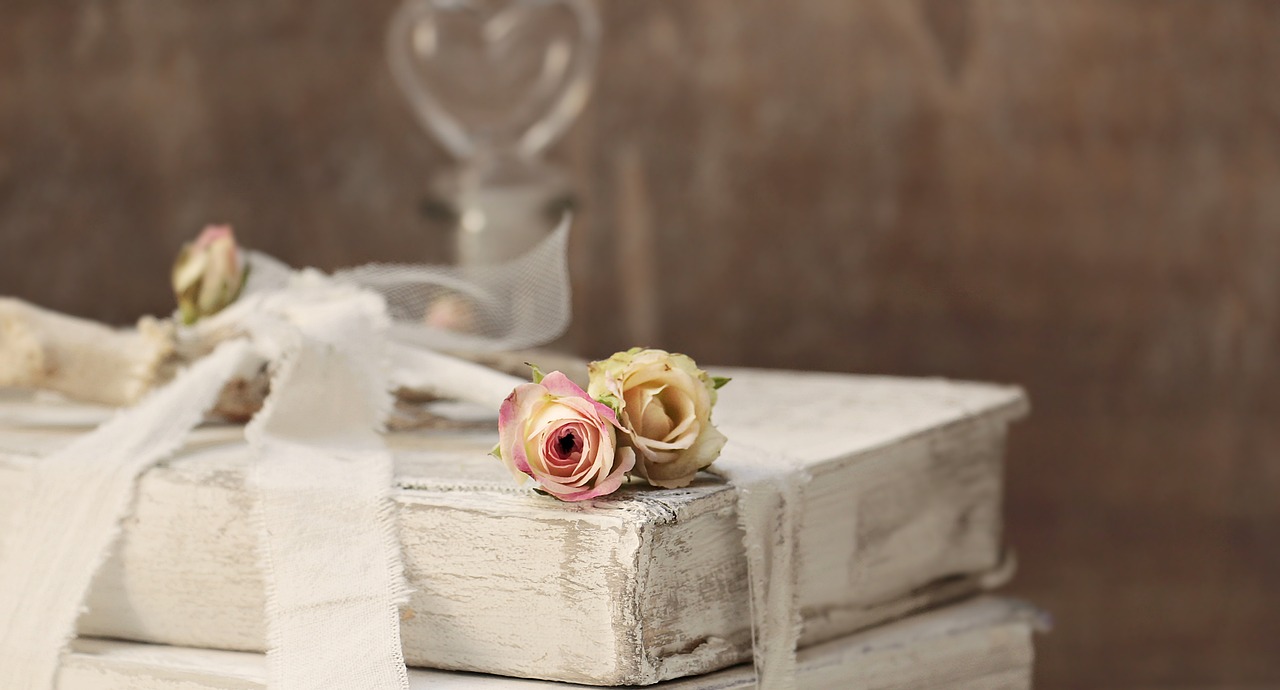
Whitespace
Ample use of whitespace or negative space creates a sense of balance and elegance.
“The strategic embrace of whitespace or negative space, within a design or composition is a powerful technique. It not only offers a visual breather but also cultivates a sense of equilibrium and sophistication. The judicious use of this ’empty’ space allows other elements to shine and communicate effectively, resulting in a more compelling and harmonious overall aesthetic.”
Don’t stop here; you can continue your exploration by following this link for more details: 80+ Colorful Websites That Bring Joy and Inspiration

Straight Lines and Geometric Shapes
Clean lines and simple shapes are common in CAS designs, providing a structured and organized appearance.
Clean lines and simple shapes are not merely design choices; they are the foundational elements of the Clean and Simple (CAS) design philosophy. This design approach prioritizes minimalism and clarity to create a visual language that is both inviting and easy to understand.
At the heart of CAS design lies the idea that less is more. The deliberate use of clean lines, uncluttered layouts and straightforward shapes communicates a sense of order and simplicity. This approach resonates with viewers on a fundamental level, offering a sense of calm and balance in an increasingly complex world.
The use of clean lines and simple shapes doesn’t just result in aesthetically pleasing visuals; it also serves a functional purpose. It allows information to be conveyed clearly and efficiently. In a CAS design, every element has a purpose and there is no extraneous detail to distract from the message. This clarity makes CAS designs effective in various contexts, from web design and branding to print materials and presentations.
Furthermore, CAS design is highly adaptable and versatile. Its simplicity allows it to be applied to a wide range of design projects, making it a valuable tool for designers in different fields. Whether it’s creating a user-friendly website, a logo that conveys a brand’s essence or a brochure that communicates information effectively, CAS principles can be harnessed to achieve these goals with elegance and precision.
In a world where information overload is common, CAS design offers a refreshing counterbalance. It cuts through the noise and clutter, allowing viewers to engage with content in a more meaningful way. It invites them to focus on the message itself, fostering a sense of connection and understanding.
Ultimately, clean lines and simple shapes in CAS design go beyond aesthetics; they embody a design philosophy that values clarity, functionality and the power of simplicity. In a visually saturated world, CAS design stands as a beacon of order and elegance, offering both designers and viewers a breath of fresh air and a clear path to effective communication.
Should you desire more in-depth information, it’s available for your perusal on this page: 50 inspiring resume designs to learn from | Canva

Emphasis on Photos and Journaling
The primary focus is on the photographs and journaling, allowing the story and images to shine.
The essence of scrapbooking lies in its simplicity and beauty. It’s a craft that celebrates the stories captured in photographs and the sentiments shared through journaling. By design, the primary focus is on these elements, allowing them to shine brightly and authentically.
Photographs, frozen moments in time, are the heart of any scrapbook. Each image carries a unique story, a memory frozen in pixels or on film. Whether it’s a candid snapshot of a family gathering, a scenic landscape from a memorable trip or a cherished portrait of a loved one, these photographs speak volumes. They evoke emotions, trigger nostalgia and bring back the sights, sounds and feelings of that specific moment.
Accompanying these visual treasures are the words that weave the narrative of each page. Journaling is where you pour your heart out, sharing the thoughts, experiences and anecdotes that breathe life into your scrapbook. It’s a chance to document the who, what, when, where and why of each photo. These words, often handwritten or thoughtfully typed, become a time capsule of your thoughts and feelings, adding a personal touch that’s uniquely yours.
In this dance between photographs and journaling, the story unfolds. The viewer is invited to step into the pages of the scrapbook and experience those moments with you. It’s a journey through time, a shared experience that transcends the limits of space and years. Whether you’re crafting a scrapbook for yourself, your family or as a gift, the power of this storytelling medium is undeniable.
While embellishments, paper choices and design elements play their roles, they are there to enhance, not overshadow, the true stars of the show—your photographs and journaling. Simplicity in design often magnifies the impact of the memories captured on each page. Every element, from the choice of background paper to the placement of photographs, is a deliberate choice made to amplify the visual and emotional impact of the story.
Ultimately, the beauty of scrapbooking lies in its ability to freeze moments in time and preserve them for future generations. It’s an art form that empowers you to be the author of your own memories, creating a legacy that transcends time. The primary focus on photographs and journaling ensures that the stories you tell will shine through, etching your experiences, emotions and the essence of the moment onto the canvas of each page.
To delve further into this matter, we encourage you to check out the additional resources provided here: Styles in scrapbooking

Timelessness
CAS layouts have a timeless quality that allows the story and emotions to take center stage.
CAS (Clean and Simple) layouts have a timeless quality that allows the story and emotions to take center stage.
In a world often filled with visual clutter and distractions, CAS scrapbooking offers a breath of fresh air. These layouts prioritize simplicity and elegance, allowing the essence of the memories being preserved to shine through. By minimizing embellishments and decorative elements, CAS layouts create a clean canvas where the focus is squarely on the photographs and the emotions they convey.
The power of CAS lies in its ability to capture the essence of a moment. Whether you’re documenting a cherished family gathering, a milestone achievement or a quiet everyday moment, CAS layouts ensure that the viewer’s attention is drawn to the heart of the story. The absence of excessive embellishments and distractions encourages viewers to engage with the emotions and memories captured in the photos.
Furthermore, CAS layouts are versatile and adaptable. They can be used to convey a range of emotions, from the joyful and celebratory to the introspective and contemplative. Whether you’re crafting a layout for a happy family vacation or a more somber remembrance page, the simplicity of CAS allows you to tailor the design to suit the mood and tone of the story being told.
The timeless quality of CAS layouts also means they can appeal to a wide audience. Whether you’re sharing your scrapbook with family, friends or future generations, the simplicity of CAS ensures that the message and emotions behind the photos are universally understood and appreciated.
Ultimately, CAS scrapbooking is a powerful reminder that less can indeed be more. By stripping away the unnecessary and focusing on the essence of the moment, CAS layouts allow the story and emotions to take center stage, creating scrapbook pages that are not only visually pleasing but also emotionally resonant and enduring.
Should you desire more in-depth information, it’s available for your perusal on this page: 35 Trendiest Fashion Blog Examples in 2023 – 10Web
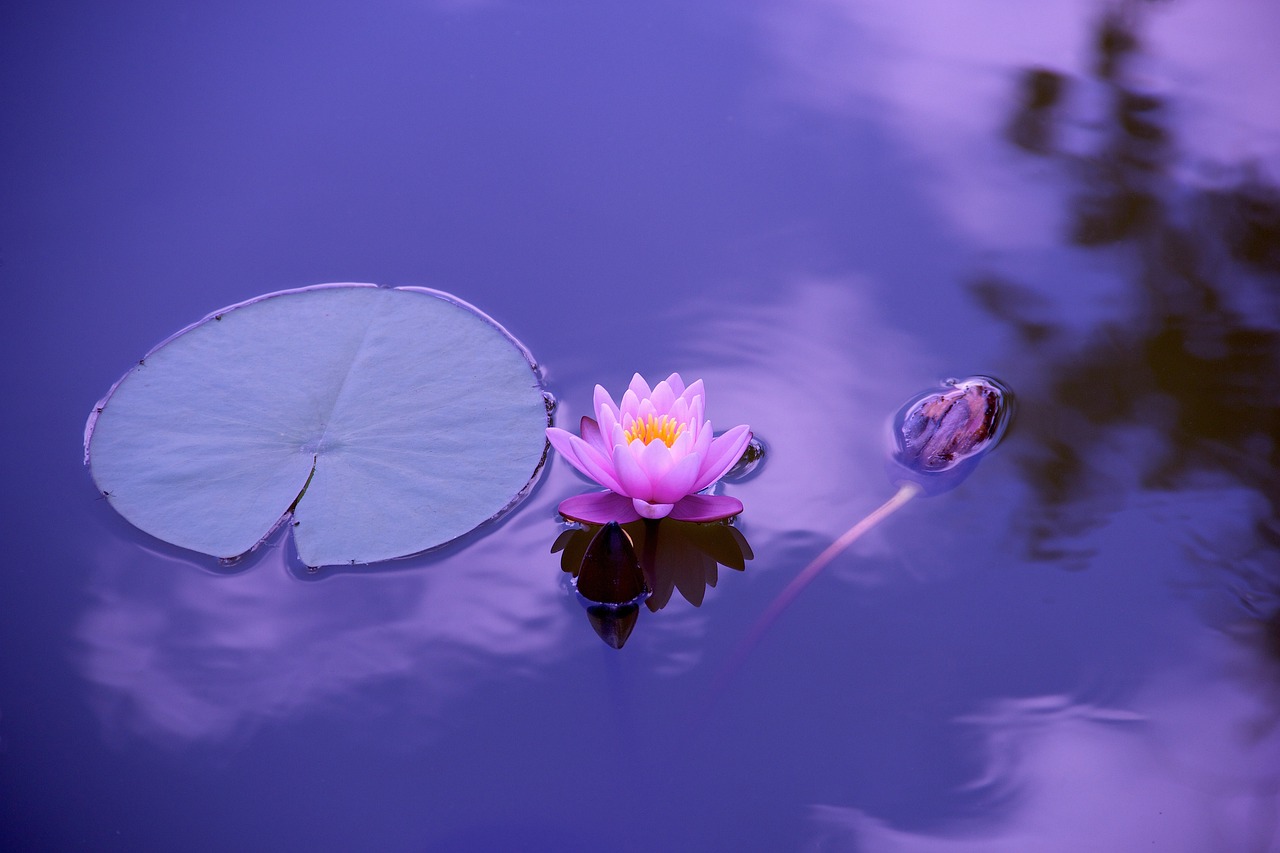
Versatility
This style complements a wide range of themes and subjects, from family vacations to everyday moments.
This style complements a wide range of themes and subjects, from family vacations to everyday moments. Whether you’re capturing the joy of a summer getaway, the warmth of family gatherings, the simplicity of daily routines or the grandeur of special occasions, this versatile approach to storytelling fits seamlessly into the tapestry of your life’s experiences.
When you apply this style to family vacations, it breathes life into the scrapbook, allowing you to relive the excitement of each adventure, from building sandcastles on the beach to hiking through breathtaking landscapes. The layering and dimension add depth to the memories, making them feel even more vivid.
For those everyday moments, like a lazy Sunday morning with a cup of coffee or a playful afternoon in the park, this style captures the beauty in the simplicity of life. It’s a way to celebrate the small joys that often go unnoticed, turning them into cherished keepsakes that you can revisit whenever you need a dose of nostalgia.
And when it comes to special occasions, such as weddings, birthdays or anniversaries, this style lends an elegant and timeless quality to your scrapbook. It transforms these significant moments into works of art, with layers of details that capture the essence of the day, from the intricate lace on a wedding gown to the sparkle in a birthday celebrant’s eyes.
In essence, this versatile style allows you to be the curator of your life’s stories, transforming everyday moments and extraordinary events into a visual journey that you, your family and future generations can treasure for years to come. Whether you’re a seasoned scrapbooker or just starting your creative journey, this style invites you to explore the endless possibilities of expression, ensuring that every memory, no matter how big or small, finds its place within the pages of your scrapbook.
To expand your knowledge on this subject, make sure to read on at this location: Shop By Interest
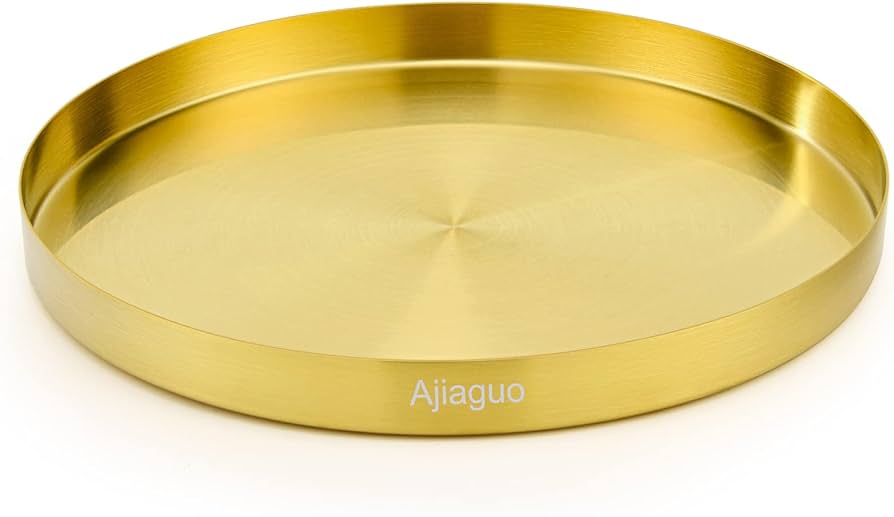
Efficiency
CAS is an efficient style for those with limited time or a preference for a straightforward approach.
Clean and Simple, often abbreviated as CAS, stands as a beacon of efficiency in the world of crafting and design. This style caters to individuals who may find themselves with limited time or those who appreciate a straightforward and uncluttered approach to their creative projects.
CAS, at its heart, is a celebration of simplicity. It’s about distilling a design to its essential elements, allowing each component to breathe and shine independently. This approach is not merely about expediency; it’s a deliberate design choice that values minimalism and elegance.
For those with bustling schedules or multiple commitments, CAS provides a welcome respite. It allows for the creation of beautiful, meaningful pieces without the need for extensive time investments. This is especially valuable in today’s fast-paced world, where time is often a precious commodity.
However, CAS is more than just a time-saving technique. It’s a design philosophy that embraces the idea that less can indeed be more. It encourages crafters to focus on the core message or theme of their project, stripping away unnecessary embellishments or distractions. This results in designs that are not only visually pleasing but also carry a sense of clarity and purpose.
Furthermore, CAS is versatile. It can be adapted to suit various creative endeavors, from card making to scrapbooking and beyond. Its flexibility allows crafters to tailor their projects to their individual preferences while still benefiting from the efficiency and elegance that CAS offers.
In summary, CAS is a design style that caters to those seeking efficiency without compromising on aesthetics. It embraces simplicity as a deliberate choice, allowing for beautiful and purposeful creations in a time-efficient manner. Whether you’re a seasoned crafter with limited time or someone who appreciates the beauty of clean and uncluttered design, CAS has much to offer.
For additional details, consider exploring the related content available here Democracy and Education by John Dewey
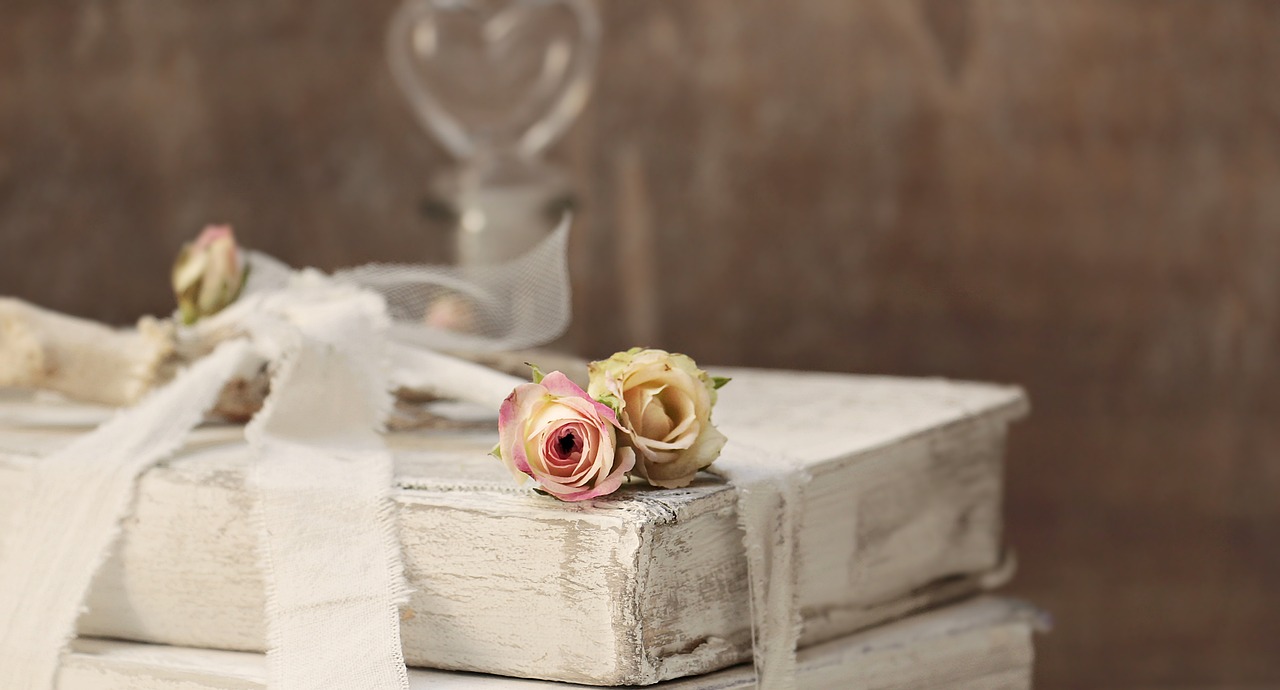
Shabby Chic Scrapbooking: Vintage Beauty with a Tattered Edge
Shabby Chic scrapbooking is a style that celebrates the beauty of imperfection and vintage aesthetics.
Shabby Chic Scrapbooking: Embracing the Beauty of Imperfection and Vintage Aesthetics
Shabby Chic scrapbooking is more than just a design style; it’s a heartfelt celebration of the past, a homage to the beauty that emerges from imperfection and a journey into the timeless allure of vintage aesthetics. Let’s explore this captivating style further and understand what makes it so endearing to scrapbookers around the world.
A Journey Through Time
Shabby Chic scrapbooking takes us on a journey through time, inviting us to rediscover the elegance of yesteryears. It’s a style that appreciates the patina of age, the wear and tear of life and the stories that old objects carry. Each torn paper, distressed edge and faded embellishment tells a story of its own, adding layers of depth and character to the scrapbook page.
The Art of Imperfection
In a world that often values perfection, Shabby Chic reminds us that imperfection has its own unique charm. Distressed elements, inked edges and uneven layers create a sense of authenticity. It’s a reminder that life, like a well-loved vintage piece, is a collection of experiences, each leaving its mark.
Nostalgia and Sentimentality
Shabby Chic scrapbooking is a haven for nostalgia and sentimentality. It captures the essence of cherished memories, echoing the sentiment that some things get better with age. The vintage embellishments, such as lace, buttons and trinkets, transport us to another era, evoking fond memories of bygone days.
The Art of Layering and Texture
Layering, a key component of Shabby Chic, is an art form in itself. This style revels in the tactile experience of crafting. The combination of different textures, such as fabric, lace, ribbon and distressed paper, adds depth and dimension to the page. It’s a sensory experience that goes beyond the visual, inviting you to touch and feel the memories you’re preserving.
A Personal Touch
Shabby Chic scrapbooking allows for a deeply personal touch. It’s about creating pages that reflect your own story and experiences. Whether you’re incorporating family heirlooms, treasured vintage finds or handmade embellishments, your scrapbook becomes a reflection of your unique journey and creative spirit.
Storytelling Through Design
In Shabby Chic scrapbooking, design is a form of storytelling. Each torn corner, faded photo and carefully chosen embellishment contributes to the narrative. It’s a design style that captures the emotions, atmosphere and essence of the moment you’re commemorating. The result is not just a scrapbook page; it’s a visual love letter to the past.
A Timeless Appeal
Perhaps one of the most enchanting aspects of Shabby Chic is its timeless appeal. While it draws inspiration from the past, it remains relevant and captivating in the present. It transcends trends, offering a timeless beauty that can be appreciated by generations to come.
In Conclusion: The Elegance of Shabby Chic
Shabby Chic scrapbooking is more than just an artistic style; it’s a tribute to the enduring allure of history, the beauty of imperfection and the sentimentality of cherished moments. It’s a style that invites us to slow down, appreciate the details and infuse our scrapbooks with a touch of vintage elegance. Whether you’re preserving family history, celebrating a milestone or capturing everyday moments, Shabby Chic is a style that embraces the richness of life’s experiences, imperfections and all. It’s a reminder that beauty can be found in the most unexpected places and that sometimes, the most cherished memories are the ones that bear the marks of time.
Looking for more insights? You’ll find them right here in our extended coverage: Victorian People Vintage Junk Journal Pages & Ephemera: Over …
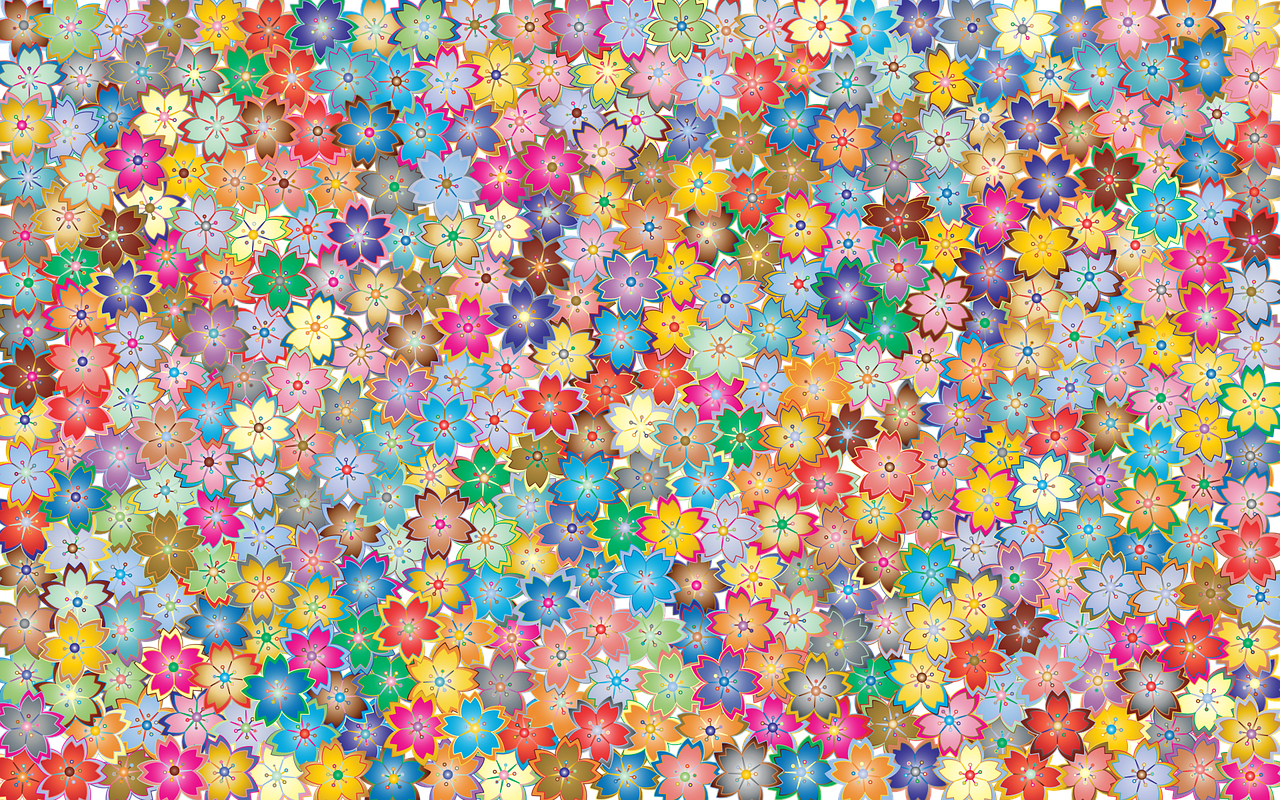
Distressed Elements
Distressed papers, inked edges and torn layers give a weathered and aged look.
The art of scrapbooking goes beyond the mere arrangement of photos and mementos; it’s about creating a narrative through design elements. Distressed papers, inked edges and torn layers are techniques that can infuse your scrapbook pages with a captivating sense of history and nostalgia.
Weathering the Pages: Distressed papers are your canvas for storytelling. They bring character to your layouts by simulating the effects of time and wear. You can achieve this effect through various methods, including sandpaper, distressing tools or even tea staining. By gently roughing up the edges and surface of your paper, you mimic the natural aging process, adding depth and texture.
Inked Edges for Definition: Inking the edges of your papers and embellishments is a versatile technique. It not only lends a vintage appearance but also serves to define the individual elements on your page. The careful application of ink can create a subtle frame around your photos, making them stand out and guiding the viewer’s eye to the focal points.
Torn Layers for Dimension: Torn layers introduce an element of tactility and dimension to your layouts. Instead of neat, straight cuts, consider tearing paper edges to create uneven, jagged borders. This technique adds a touch of rustic charm, as if your photos and memorabilia were carefully preserved for generations. Layering these torn pieces further enhances the 3D effect, inviting viewers to explore your page with their sense of touch as well as sight.
Aged Look, Timeless Appeal: The beauty of these techniques lies in their ability to imbue your scrapbook with a sense of history and emotion. They evoke memories of treasured heirlooms and faded letters, transporting viewers to another era. Whether you’re crafting a vintage-inspired page or seeking to capture the essence of a bygone moment, distressing, inking and tearing provide the tools to achieve that timeless, aged look.
Balancing the Elements: As with any artistic endeavor, balance is key. While distressing, inking and tearing can add character, be mindful not to overdo it. Striking the right balance ensures that your page retains clarity and readability. The goal is to enhance your storytelling, not overwhelm it.
In essence, the artistry of scrapbooking lies in the details. Distressed papers, inked edges and torn layers are techniques that elevate your creations from mere photo albums to immersive visual narratives. They invite viewers to journey through time, connecting with the stories and emotions you’ve carefully preserved. So, as you embark on your next scrapbooking project, consider how these techniques can breathe life into your memories, infusing them with the warmth and character of days gone by.
To expand your knowledge on this subject, make sure to read on at this location: ATC Artist Tradition Cards discovering. Supplies and Techniques.

Antique and Vintage Embellishments
The use of vintage-style embellishments like lace, buttons and antique keys adds nostalgic charm.
The use of vintage-style embellishments like lace, buttons and antique keys adds nostalgic charm and a touch of timeless elegance to your scrapbook projects. These carefully chosen elements transport viewers to a bygone era, evoking a sense of nostalgia and sentimentality.
Lace, with its delicate patterns and intricate designs, brings a soft and feminine touch to your layouts. Whether used as borders, background accents or as elegant frames for your photos, lace adds a touch of vintage romance. It can also be layered to create texture and depth, enhancing the visual interest of your pages.
Buttons, those small but significant details, offer a sense of history and craftsmanship. Vintage buttons, in particular, can tell a story of their own. They can be used as eye-catching focal points or scattered like treasures throughout your pages. Each button may have a unique story or origin, making them not only decorative but also meaningful.
Antique keys, with their intricate shapes and weathered patina, symbolize mystery and nostalgia. Incorporating these into your scrapbook layouts can add a sense of adventure and curiosity. They can be used as embellishments, tucked into pockets or even attached to ribbons as page markers. Each key carries a sense of history and the potential to unlock memories.
When combined, these vintage-style embellishments create a harmonious blend of textures and aesthetics that enhance the overall visual appeal of your scrapbook pages. They provide a tangible connection to the past and evoke a sense of warmth and familiarity. Whether you’re documenting family history, special occasions or everyday moments, these embellishments can transform your scrapbook into a cherished keepsake that not only tells a story but also captures the essence of a bygone era.
If you’d like to dive deeper into this subject, there’s more to discover on this page: Design Team – Creative Embellishments
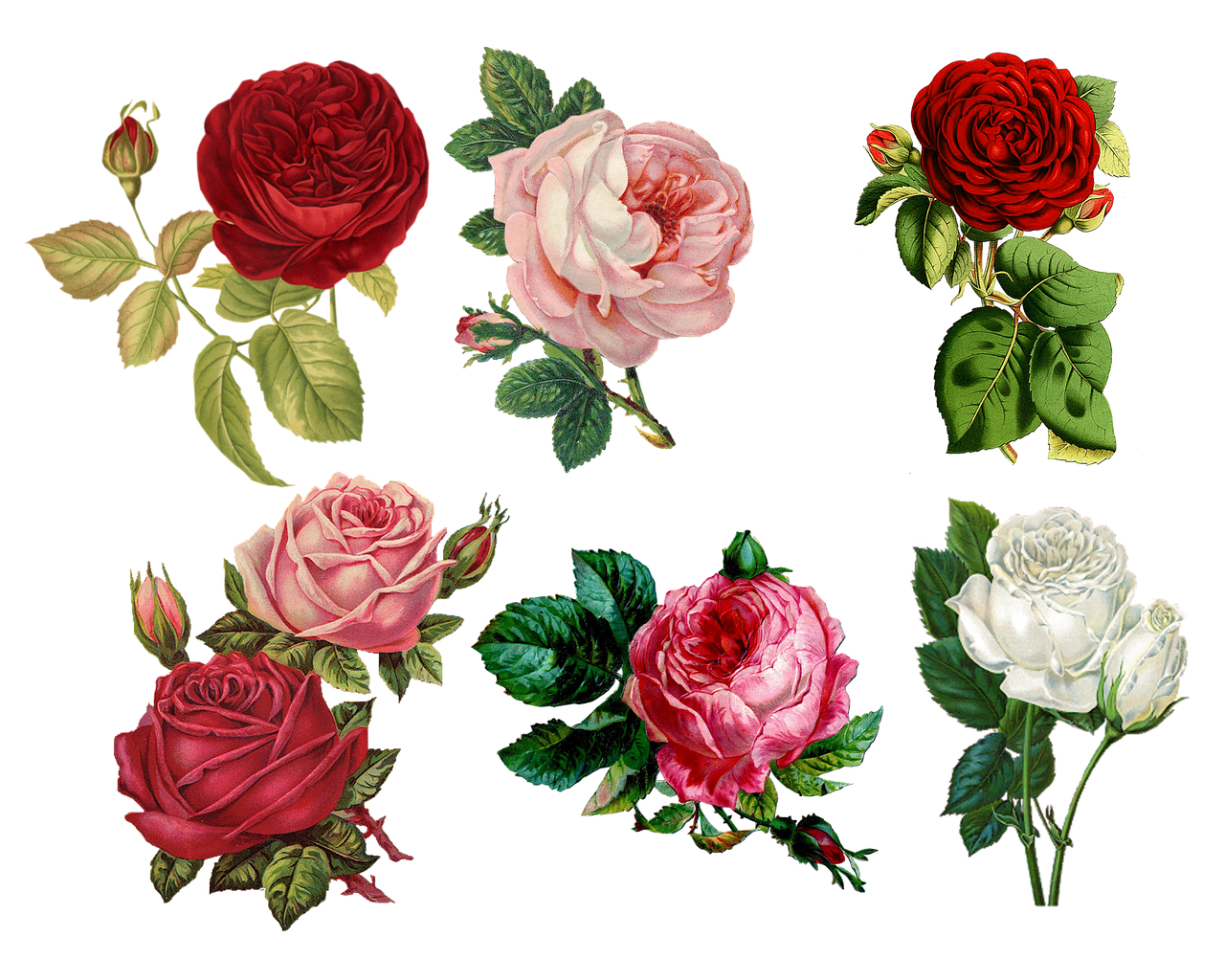
Floral Patterns
Floral patterns, pastel colors and soft hues evoke a romantic and vintage atmosphere.
Floral patterns, pastel colors and soft hues have a magical ability to transport us to a bygone era, where romance and vintage charm reign supreme. These design elements work in harmony to create an atmosphere that captivates the senses and stirs the heart.
Imagine a room adorned with delicate floral patterns, where blossoms seem to sway in a gentle breeze. These patterns, whether on wallpaper, curtains or upholstery, infuse spaces with a timeless beauty reminiscent of gardens in full bloom. They bring the outdoors inside, adding a touch of nature’s elegance to our surroundings.
Pastel colors, with their gentle and subdued tones, contribute to this romantic ambiance. Shades like blush pink, mint green and powder blue have a calming effect, enveloping us in a sense of tranquility and nostalgia. They evoke memories of faded love letters, vintage photographs and cherished heirlooms passed down through generations.
Soft hues, when paired with floral patterns and pastels, amplify the vintage allure. They create an environment that feels like a whisper from the past, where time seems to slow down. It’s a place where every moment is savored, where life’s simple pleasures take precedence.
This romantic and vintage atmosphere isn’t limited to interior design alone; it extends to fashion, events and even digital aesthetics. Vintage-inspired clothing with floral prints and pastel hues can transport us to a different era, allowing us to embody the elegance and grace of times gone by. In events like weddings, these elements set the stage for a celebration infused with love and nostalgia.
Moreover, in the digital realm, this aesthetic finds a home in photography filters and social media themes. Filters that mimic the soft, dreamy quality of vintage photographs transport our digital snapshots to a world where every moment feels like a cherished memory.
In essence, floral patterns, pastel colors and soft hues come together as a symphony of design, evoking a romantic and vintage atmosphere that transcends time. Whether in our homes, our wardrobes or our digital expressions, these elements invite us to step into a world where beauty, nostalgia and love intertwine, creating an enduring sense of wonder and enchantment.
Additionally, you can find further information on this topic by visiting this page: Gemini Large Outline Floral Die – Peonies

Layered Textures
The layering of various textures, such as fabric, lace and ribbon, adds depth and dimension.
The layering of various textures, such as fabric, lace and ribbon, adds depth and dimension, transforming a simple design into a multi-dimensional masterpiece that engages our senses on multiple levels.
Imagine a beautifully crafted piece of clothing, a gown perhaps. At first glance, it may appear as a single, seamless creation, but upon closer inspection, the intricate artistry of texture layering becomes apparent. Each layer of fabric, lace and ribbon serves a unique purpose in this tactile symphony.
Firstly, there’s the fabric itself, the foundation of the design. Its texture can range from the smooth silkiness of satin to the cozy warmth of wool. This base layer provides the canvas upon which the entire ensemble is built. Its weight, drape and sheen set the tone for the entire garment and its texture is the first to greet the wearer’s skin.
Next, lace delicately weaves its magic. It’s like a whisper of elegance, a tantalizing hint of what’s beneath. The intricate patterns and fine threads create a visual feast, drawing the eye and inviting closer examination. When touched, lace offers a delightful contrast to the smoothness of the fabric, engaging both the sense of sight and touch.
Then come the ribbons, which are more than just decorative embellishments. They serve as tactile accents, inviting your fingers to explore. The gentle ripple of a satin ribbon or the crinkled charm of grosgrain adds a tactile dimension, begging to be felt. Ribbons can also introduce a subtle element of color or contrast, tying the different textures together visually.
But it’s not just about aesthetics; it’s about the sensory experience. As you wear this layered creation, you feel a symphony of textures against your skin. The fabric provides comfort and structure, the lace adds a touch of sensuality and the ribbons offer playful accents. Together, they create a multi-sensory experience that transcends mere fashion, becoming a work of wearable art.
This idea of layering textures extends beyond clothing, finding its way into various design elements, from interior decor to culinary creations. In interior design, combining textures like plush velvet with rough-hewn wood or smooth glass can transform a space, making it visually and tactilely appealing. Similarly, in the culinary world, the fusion of textures in a dish, such as the crunch of toasted almonds against the creaminess of a custard, elevates the dining experience to a multisensory adventure.
In essence, the layering of textures is a design principle that enriches our lives by engaging our senses in ways that go beyond the surface. It adds depth, intrigue and a touch of magic to the ordinary, reminding us that the world around us is filled with beauty waiting to be discovered through touch, sight and even taste.
Don’t stop here; you can continue your exploration by following this link for more details: never stop exploring…

Romantic Nostalgia
Shabby Chic scrapbooking evokes a sense of nostalgia, making it ideal for preserving family history or romantic memories.
Shabby Chic scrapbooking is like taking a beautiful journey back in time, where every page is a window to the past, filled with the warmth of nostalgia. It’s a style that beautifully captures the essence of cherished family history or the romantic moments that have woven the tapestry of our lives.
One of the hallmarks of Shabby Chic scrapbooking is its ability to transport us to bygone eras. Vintage photographs, faded sepia tones and the use of distressed, time-worn materials all work together to evoke the feeling of flipping through an old family album discovered in an attic. This unique aesthetic lends itself perfectly to the art of preserving family history. As you compile photographs of generations past, you’re not just crafting pages; you’re weaving a narrative that connects the present with the past. Each embellishment, from delicate lace to antique buttons, tells a story of its own, infusing your scrapbook with the essence of ancestry.
For romantic memories, Shabby Chic scrapbooking offers an intimate and tender canvas. The soft color palettes, vintage floral motifs and whimsical details create an atmosphere of enchantment. Whether you’re documenting a love story, an engagement, a wedding or simply celebrating moments of affection, this style allows you to capture the sentiments of romance with elegance and grace. The distressed edges and gentle distressing techniques give your pages a timeless, love-worn feel, mirroring the enduring nature of the emotions you’re preserving.
Moreover, Shabby Chic scrapbooking invites creativity and personalization. You can incorporate personal mementos, such as handwritten letters, pressed flowers or small trinkets, to make your pages even more meaningful. These tactile additions add an extra layer of depth to your storytelling, making the experience of flipping through your scrapbook a sensory journey.
As you craft your Shabby Chic scrapbook, you’re not just creating a visual masterpiece; you’re crafting a tangible piece of your own history or a testament to the enduring power of love. It’s a style that invites you to slow down, savor the memories and infuse each page with a touch of your own nostalgia. Whether it’s family heritage or moments of romance, Shabby Chic scrapbooking offers a beautiful and heartfelt way to honor and treasure the stories that matter most.
To expand your knowledge on this subject, make sure to read on at this location: Free Vintage Google Slides themes and PowerPoint templates

Artistic Expression
It provides a canvas for creative expression, where each layout can resemble a work of art.
Scrapbooking is not just a hobby; it’s a form of artistic expression that allows individuals to craft their personal narratives and memories into tangible works of art. With each blank page or digital canvas, scrapbookers embark on a journey of creativity, transforming ordinary materials into extraordinary compositions that tell a story, evoke emotions and capture the essence of a moment.
The scrapbook page serves as a blank canvas, much like an artist’s pristine sheet of paper or a painter’s untouched canvas. It’s a space where creativity knows no bounds and where the only limitations are the boundaries of one’s imagination. Whether it’s a traditional physical scrapbook or a digital layout, each page invites the scrapbooker to become a storyteller, an artist and a curator of memories.
Every layout in a scrapbook is a unique opportunity for creative expression. It’s a chance to experiment with colors, textures and design elements to convey the emotions and themes associated with the memories being preserved. From choosing the perfect color palette to arranging photos and embellishments in a harmonious way, scrapbooking demands both artistic sensibility and storytelling finesse.
Much like a painter selecting their brushes and palette, scrapbookers choose from a wide array of materials and tools to create their compositions. Decorative papers, stickers, ribbons and an assortment of embellishments become the artist’s palette, offering endless options for adding depth, texture and visual interest to the page.
The process of scrapbooking is akin to building a visual narrative, with each element carefully selected and placed to convey a particular mood or convey the essence of the moment being documented. Whether it’s the joy of a family vacation, the warmth of a holiday celebration or the excitement of a milestone achievement, scrapbookers use their creativity to capture and preserve these emotions.
Ultimately, a well-crafted scrapbook layout becomes more than just a collection of photos and memorabilia; it becomes a work of art that reflects the unique perspective, personality and artistic sensibilities of its creator. It’s a testament to the power of creativity to transform ordinary moments into extraordinary memories and it serves as a cherished keepsake that can be shared and treasured for generations to come.
In this way, scrapbooking is not merely a pastime, but a profound form of artistic expression that allows individuals to blend their creativity with their most cherished memories, resulting in a beautiful and meaningful fusion of art and life. Each scrapbook page is a testament to the idea that life itself is a canvas waiting to be filled with the colors and textures of our experiences and that through creativity, we can transform those moments into works of art that tell our unique stories.
You can also read more about this here: ATC Artist Tradition Cards discovering. Supplies and Techniques.

Unique Storytelling
Shabby Chic allows for unique storytelling, capturing the essence of the past with a touch of whimsy.
Shabby Chic is a design style that transcends the boundaries of traditional aesthetics, offering a canvas for creating unique and evocative narratives. It invites you to embark on a creative journey where you can artfully blend the charm of yesteryears with a whimsical twist, resulting in storytelling that resonates with a sense of nostalgia and wonder.
At the heart of Shabby Chic is the ability to evoke the essence of the past. It’s a style that pays homage to vintage and antique elements, incorporating weathered and distressed textures that whisper stories of days gone by. Each piece of furniture or decor seems to have a history, an intriguing tale to tell. This essence of the past becomes a storytelling device in itself, sparking curiosity and prompting viewers to imagine the narratives behind each aged piece.
Moreover, Shabby Chic’s penchant for embracing imperfections and patina allows for a genuine and heartfelt form of storytelling. It reminds us that life, like well-loved furniture, is marked by both beauty and imperfection. The worn edges, faded colors and timeworn character of Shabby Chic pieces serve as a metaphor for the human experience, where every scar and blemish tells a story of resilience and growth.
The whimsical touch in Shabby Chic design adds an element of fantasy and playfulness to the storytelling. It’s an invitation to dream, to see the world through a lens of whimsy and enchantment. The soft, pastel colors, floral patterns and delicate details transport us to a realm where the ordinary becomes extraordinary and the mundane takes on a touch of magic.
In the context of scrapbooking, Shabby Chic becomes a powerful tool for narrating personal stories. By incorporating vintage elements, distressed textures and a touch of whimsy, you can create layouts and pages that not only document moments in time but also capture the emotions and memories associated with them. Each scrapbook becomes a visual diary filled with tales of love, laughter and cherished experiences.
Ultimately, Shabby Chic’s ability to merge the past with whimsy allows you to tell stories that are rich in depth and emotion. It invites viewers to explore the layers of history, imperfection and fantasy that make each narrative unique and captivating. Whether you’re designing a room or crafting a scrapbook page, Shabby Chic empowers you to infuse your storytelling with a sense of nostalgia, wonder and the timeless beauty of the past.
For additional details, consider exploring the related content available here 35 Trendiest Fashion Blog Examples in 2023 – 10Web

Choosing Your Style: A Personal Journey
Ultimately, the choice between Clean and Simple and Shabby Chic scrapbooking styles is a highly personal one. Some scrapbookers may even combine elements of both styles to create a hybrid that suits their preferences and the theme of their projects. The key is to let your storytelling and creativity guide your choices.
Ultimately, the choice between Clean and Simple and Shabby Chic scrapbooking styles is a highly personal one, reflecting the individuality and creativity of each scrapbooker. These two styles offer distinct visual aesthetics and evoke different emotional tones in your scrapbook projects. However, the beauty of scrapbooking lies in its flexibility, allowing you to blend and adapt elements from both styles to create a truly unique and personalized experience.
Some scrapbookers find themselves drawn to the minimalist elegance of Clean and Simple. This style embraces clean lines, uncluttered layouts and a focus on the essentials. It’s ideal for those who appreciate a sense of order and want their photos and journaling to take center stage. Clean and Simple scrapbooking can be especially effective when you want to convey a straightforward narrative or highlight the beauty of a single, impactful image.
On the other hand, the Shabby Chic style exudes a charming, vintage and slightly worn aesthetic. It’s perfect for those who love to layer papers, distress edges and embellish with lace, fabric or antique trinkets. Shabby Chic scrapbooking adds a touch of nostalgia and whimsy to your projects, evoking a sense of warmth and sentimentality. It’s an excellent choice for preserving memories that carry a timeless, romantic or rustic quality.
However, you need not feel confined to choosing one style over the other. Many scrapbookers find joy in creating hybrid layouts that blend elements from both Clean and Simple and Shabby Chic styles. This allows you to strike a balance between simplicity and embellishment, creating layouts that feel personal and visually appealing. For instance, you can maintain clean lines and uncluttered backgrounds while incorporating distressed paper edges, vintage-inspired embellishments or textured layers for added depth and interest.
The key to successful scrapbooking, regardless of the style or hybrid approach you choose, is to let your storytelling and creativity guide your choices. Your memories and the emotions they evoke should be at the heart of your scrapbook projects. Whether you prefer the clean sophistication of one style, the vintage charm of another or a harmonious blend of both, your scrapbooking should reflect your unique perspective and the essence of the stories you wish to preserve.
In the end, the choice is yours and it’s perfectly acceptable to experiment, evolve and adapt your scrapbooking style over time. As long as your layouts capture the moments that matter most to you and resonate with the stories you want to tell, your scrapbooks will be beautiful expressions of your life’s journey and your artistic creativity.
You can also read more about this here: 35 Trendiest Fashion Blog Examples in 2023 – 10Web
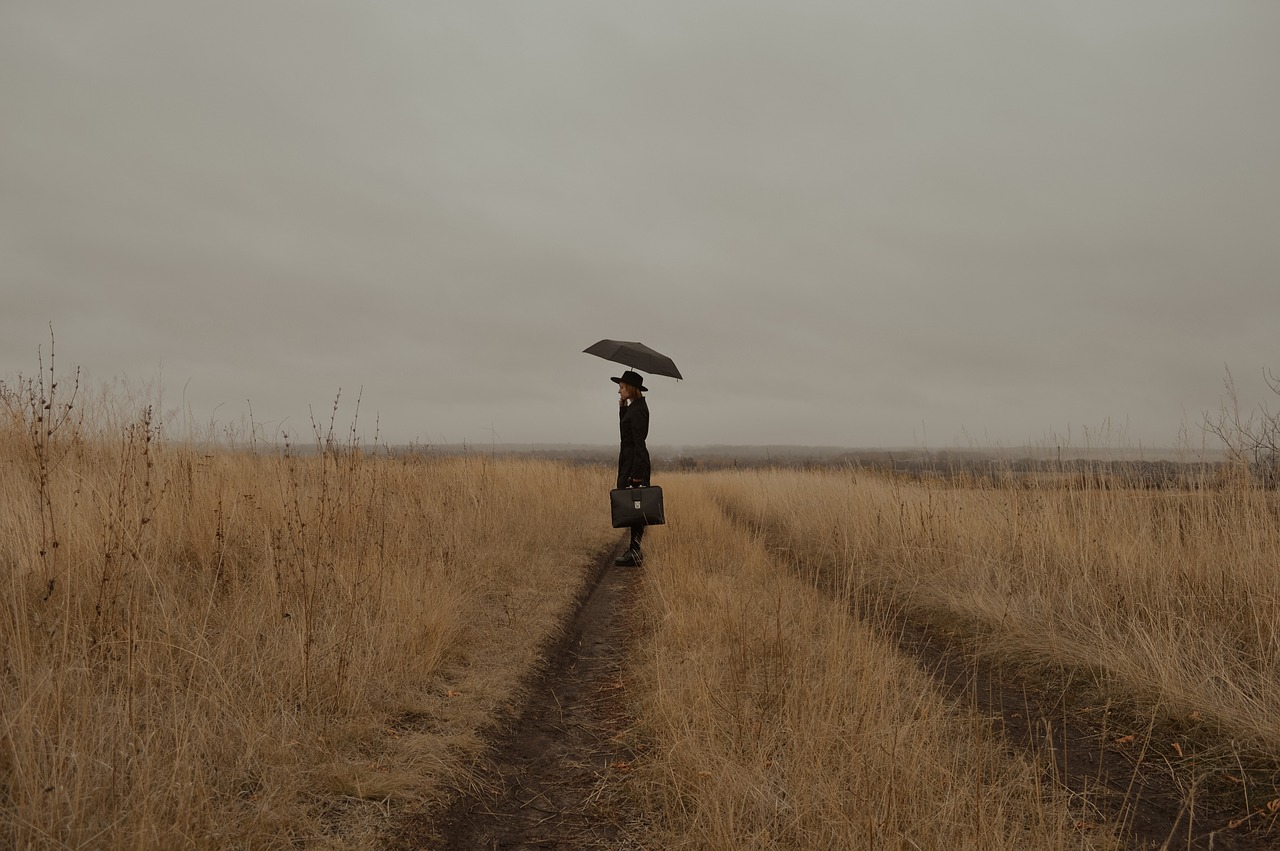
The Story
Does the story you want to tell lend itself to a more elegant, minimalist approach or a vintage, nostalgic feel?
When deciding on the style for your scrapbooking project, consider the essence of the story you aim to convey. The choice between an elegant, minimalist approach and a vintage, nostalgic feel can profoundly impact the narrative’s tone and resonance:
Elegant Minimalism: If your story revolves around simplicity, modernity or contemporary themes, an elegant and minimalist approach can be the perfect choice. Here’s how to extend this idea:
Sleek Simplicity: An elegant, minimalist layout focuses on clean lines, ample white space and restrained embellishments. It allows the content to speak for itself, creating a sense of sophistication.
Contemporary Themes: This style suits stories related to modern events, achievements or milestones. Think weddings, graduations or sleek cityscapes. The simplicity highlights the significance of the moment.
Subtle Accents: Even in minimalism, small, well-chosen accents can make a significant impact. Consider using a single elegant font, a touch of metallic foil or monochromatic color schemes to enhance the visual appeal.
Effortless Elegance: An elegant layout should exude an effortless grace. It’s about making choices that enhance the content without overwhelming it, much like a timeless piece of art.
Vintage Nostalgia: On the other hand, if your story carries a sense of nostalgia, memories or a desire to connect with the past, a vintage style can be incredibly evocative. Here’s how to expand on this idea:
Timeless Aesthetics: Vintage scrapbooking often draws inspiration from bygone eras, using antique fonts, sepia tones or distressed textures. These elements transport viewers to another time.
Personal Histories: Consider this style for stories related to family heritage, cherished traditions or personal journeys. Vintage aesthetics can help recreate the ambiance of yesteryears.
Layered Storytelling: Vintage layouts often incorporate layers, distressed edges and tactile elements like lace or aged paper. These layers symbolize the layers of history, memories and experiences.
Emotional Connections: The vintage approach can evoke deep emotional connections, as it taps into shared cultural memories and the sentimentality of days gone by.
Ultimately, your choice between elegant minimalism and vintage nostalgia should align with the emotions and themes at the heart of your scrapbooking project. By carefully considering the story you want to tell, you can craft a layout that not only captures the essence of the narrative but also resonates with both you and your audience on a profound level.
To expand your knowledge on this subject, make sure to read on at this location: Free vintage presentation templates to customize | Canva
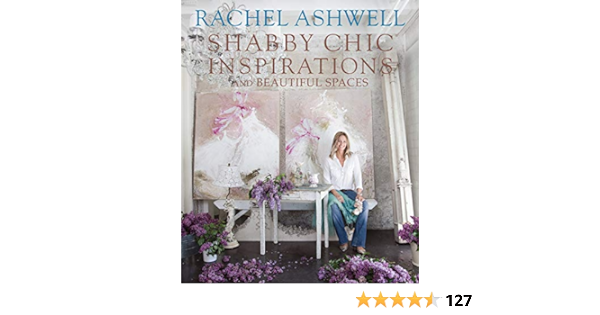
Personal Aesthetic
Which style resonates more with your personal design preferences and artistic sensibilities?
When it comes to matters of design and artistry, the question of which style resonates more with your personal preferences and creative sensibilities is an invitation to explore your unique identity as an artist. It’s a journey that goes beyond the mere selection of a style; it’s about discovering the essence of your creative spirit.
Expressing Individuality: The choice of design style is an opportunity to express your individuality and convey your artistic voice. Whether you lean towards minimalism or flourish in the intricacies of maximalism, your chosen style becomes a visual representation of your creative self.
Embracing Minimalism: If you find yourself drawn to minimalism, you might appreciate the elegance and simplicity it offers. Minimalist design often relies on clean lines, ample whitespace and a focus on essential elements. It’s about distilling a message or concept to its purest form, allowing each element to breathe and resonate.
Celebrating Maximalism: Conversely, maximalism is a celebration of abundance and complexity. It thrives on layering, textures and bold combinations of colors and patterns. Maximalist designs are vibrant and dynamic, often telling rich and layered stories. They can be an ideal choice if you enjoy a sense of opulence and have a penchant for intricate detailing.
Finding Balance: It’s also worth exploring how your design preferences might evolve over time or in different contexts. Some artists find joy in balancing both minimalism and maximalism, using each as a tool when it best serves their creative vision. This ability to adapt and blend styles can be a powerful expression of your artistic versatility.
Influences and Inspiration: Consider what influences your design choices. Are there artists, movements or cultural elements that inspire your style? Exploring the roots of your creative inspiration can provide valuable insights into your preferences.
Audience and Purpose: Your choice of design style can also be influenced by your intended audience and purpose. Are you creating for yourself, a specific client or a broader audience? Understanding the expectations and preferences of your viewers can help you tailor your style accordingly.
Experimentation: Don’t be afraid to experiment and push the boundaries of your chosen style. Artistic growth often comes from exploring new techniques, mixing styles and venturing outside your comfort zone. This can lead to exciting breakthroughs and discoveries in your creative journey.
Ultimately, the question of which style resonates with you is an invitation to explore, evolve and embrace your artistic identity. It’s not about conforming to a single style but rather about harnessing the power of design to authentically express your creativity. Whether you gravitate towards the simplicity of minimalism or the exuberance of maximalism, your style is a reflection of the beautiful and unique artist within you.
You can also read more about this here: List of Aesthetics | Aesthetics Wiki | Fandom
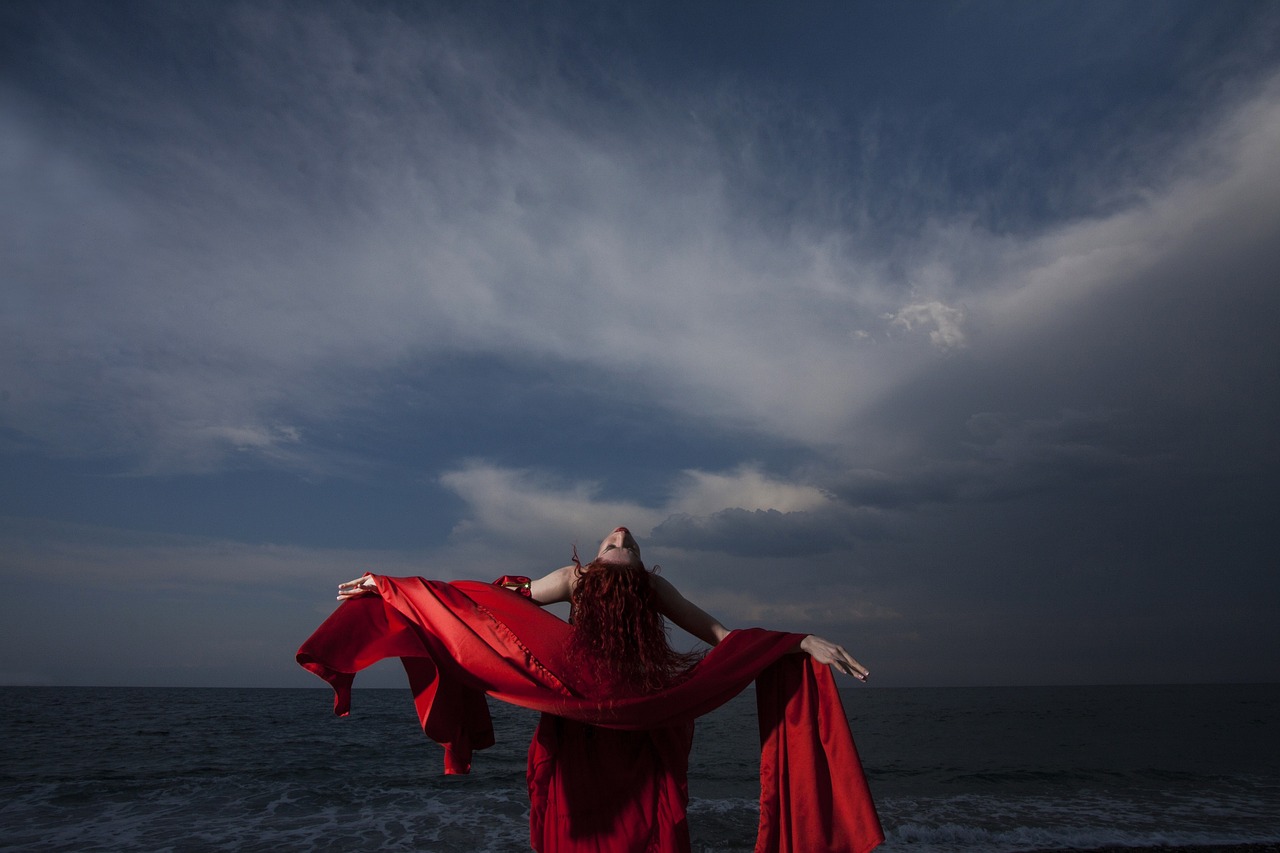
Available Time
Consider the time you have available for scrapbooking. Clean and Simple layouts can be quicker to create, while Shabby Chic designs may require more time and attention to detail.
When embarking on a scrapbooking project, one of the most practical considerations is the time you have available for your creative endeavor. Your available time not only impacts the complexity of your design but also influences the style you choose to pursue. Let’s explore this aspect further:
Clean and Simple: Time-Efficient Elegance
Clean and Simple scrapbooking is often celebrated for its efficiency. If you find yourself with limited time for your creative pursuits, this style can be a valuable ally. Its minimalist approach relies on straightforward layouts, uncluttered designs and a focused use of essential elements. Here’s how time factors into Clean and Simple scrapbooking:
Quick Assembly: Clean and Simple layouts are designed to come together swiftly. You can create a visually appealing page with minimal fuss, making it an ideal choice for capturing memories when you’re short on time.
Efficient Photo Placement: This style often prioritizes a grid-based arrangement, making it easy to insert photos and journaling quickly. The structured design principles ensure that your elements fall neatly into place.
Limited Embellishments: Clean and Simple layouts typically use fewer embellishments, which means less time spent selecting and arranging decorative elements. The focus remains on the essence of your photos and stories.
Modern Aesthetic: The streamlined nature of Clean and Simple scrapbooking aligns well with contemporary design sensibilities, offering a sleek and polished look that doesn’t require extensive time investments.
Shabby Chic: Craftsmanship and Patience
On the other hand, Shabby Chic scrapbooking embodies a style that may require more time and attention to detail. This approach seeks to capture the charm of vintage aesthetics and whimsical creativity and this often means investing more effort into your projects:
Layered Complexity: Shabby Chic designs thrive on layers, textures and distressed elements. Achieving this aesthetic involves carefully building up your layout, which can be a time-intensive process.
Embellishment Variety: This style often incorporates a wide range of embellishments, from lace and ribbons to vintage trinkets. The selection and placement of these decorative elements can be a labor of love.
Distressing Techniques: Achieving the signature “shabby” look may involve distressing paper and embellishments, adding an extra step to your creative process. Techniques like ink distressing, tearing and crinkling require patience and precision.
Storytelling Details: Shabby Chic layouts often include handwritten journaling and personal touches that contribute to the narrative. Crafting heartfelt stories and including intricate details can be a time investment.
Choosing According to Your Schedule:
When selecting a scrapbooking style, it’s essential to consider your available time and how you wish to allocate it. Clean and Simple scrapbooking offers an efficient way to capture memories when time is limited, making it a practical choice for busy schedules. In contrast, Shabby Chic scrapbooking rewards those who have the time and patience to indulge in the intricate details and nostalgic nuances of their projects.
Remember that the joy of scrapbooking comes not just from the final product but also from the creative journey itself. Whether you opt for Clean and Simple efficiency or Shabby Chic craftsmanship, the act of preserving memories and telling your stories remains a fulfilling and meaningful endeavor. Tailor your scrapbooking style to your available time and let your creativity flourish within your schedule.
Additionally, you can find further information on this topic by visiting this page: 35 Trendiest Fashion Blog Examples in 2023 – 10Web

Theme and Mood
Think about the theme or mood you want to convey. Different styles can evoke different emotions and atmospheres.
Absolutely! Here’s an extended idea:
“When embarking on your scrapbooking journey, one of the first and most exciting considerations is the theme or mood you want to convey. Scrapbooking is a form of visual storytelling and much like any storytelling medium, the theme and mood you choose become the foundation upon which your narrative unfolds. Each style you explore has the remarkable power to evoke distinct emotions and atmospheres, making your creative journey a dynamic and expressive one.
The theme you select serves as the compass for your creative process. It provides a clear direction and purpose for your layout, allowing you to center your design choices around a central idea or concept. Whether you’re commemorating a joyful family vacation, capturing the innocence of childhood, celebrating a milestone or reflecting on a cherished memory, your chosen theme sets the stage for your scrapbooking adventure.
Consider, for instance, the profound impact of choosing a vintage theme. Vintage layouts transport viewers to bygone eras, infusing a sense of nostalgia and sentimentality into the pages. The use of sepia-toned photos, distressed paper and antique-style embellishments transports the viewer to a different time, creating an atmosphere rich in history and emotion.
Conversely, a modern and minimalist theme embraces clean lines, bold typography and a limited color palette. Such layouts exude a contemporary and sleek vibe, perfect for capturing the essence of urban life, technology-driven moments or the fast-paced rhythms of the present day.
Mood is another vital dimension to explore. It’s the emotional undercurrent that flows through your scrapbooking project, imbuing it with feeling and atmosphere. The mood can range from joyful and celebratory to tranquil and introspective, from whimsical and playful to solemn and reverent. By consciously selecting a mood that aligns with your theme, you create a powerful synergy that resonates with your viewers.
For instance, a layout featuring vibrant colors, cheerful patterns and whimsical embellishments naturally exudes a joyful and playful mood. It’s perfect for documenting children’s birthdays, carefree adventures or moments of laughter and happiness.
On the other hand, a layout with muted tones, elegant designs and subtle textures can evoke a serene and reflective mood. This is ideal for preserving quiet moments, contemplative reflections or paying tribute to loved ones.
By understanding the interplay between theme and mood, you unlock the full potential of your scrapbooking artistry. You can experiment with various combinations, allowing your creativity to flow freely and adapt to the stories you wish to tell. Each theme-mood pairing becomes a unique opportunity to express your creativity, share your experiences and connect with your audience on a profound level.
In essence, scrapbooking is a canvas where theme and mood converge to breathe life into your memories. It’s a storytelling journey where you, as the artist, have the privilege to choose the emotional palette and artistic style that best captures the essence of your moments. So, embrace the creative freedom, let your emotions guide your choices and embark on a scrapbooking adventure that not only preserves your memories but also brings them to life with themes and moods that resonate deeply.”
Looking for more insights? You’ll find them right here in our extended coverage: Difference Between Mood Board and Concept Board – Foyr
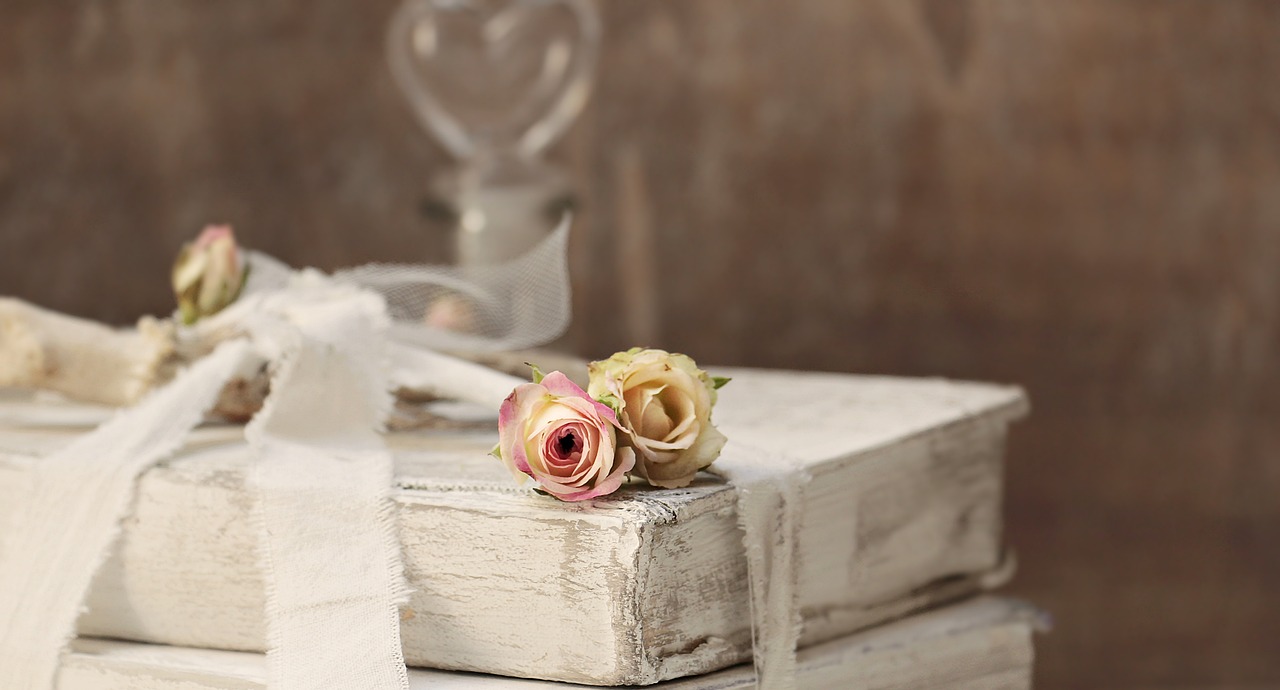
In conclusion, Clean and Simple and Shabby Chic are two captivating scrapbooking styles that cater to different tastes and storytelling needs. The beauty of scrapbooking lies in its flexibility, allowing each individual to infuse their layouts with their unique voice and perspective. So, whether you opt for clean lines and simplicity or embrace the shabby charm of nostalgia, remember that the true essence of scrapbooking is in the love and creativity you pour into each page, preserving memories for generations to come.
In summary, the scrapbooking world is a vibrant tapestry of styles, each offering a distinct way to express your creativity and tell your unique stories. Clean and Simple (CAS) and Shabby Chic represent just two of the many captivating options available to crafters and their differences highlight the vast spectrum of possibilities within this beloved hobby.
CAS appeals to those who appreciate the power of minimalism and the elegance of simplicity. With its focus on clean lines, uncluttered spaces and a restrained use of embellishments, CAS layouts shine a spotlight on the essential elements of your story. This style excels at creating a modern and sophisticated look, allowing your photos and sentiments to take center stage. It’s perfect for capturing contemporary moments and conveying a sense of clarity and order.
On the other hand, Shabby Chic invites crafters to dive into a world of nostalgia, charm and whimsy. With its vintage-inspired elements, distressed textures and an abundance of embellishments, this style transports us to a bygone era filled with romanticism and sentimentality. Shabby Chic scrapbooking is a heartfelt way to infuse your projects with a sense of warmth and nostalgia, making it well-suited for preserving family history, romantic memories or cherished moments from the past.
The beauty of scrapbooking is that it caters to an array of tastes and storytelling needs, allowing you to tailor each page to your unique vision. Whether you lean toward the modern and minimalistic appeal of CAS or are drawn to the shabby charm of Shabby Chic, remember that both styles share a common purpose: to capture and preserve your memories for generations to come.
In the end, what truly matters in scrapbooking is not the style you choose but the love and creativity you pour into each layout. It’s the emotion behind the photos, the stories you share and the personal touches that make each page a work of art. Scrapbooking is an art form that invites you to celebrate life’s moments, big and small and to share your perspective with the world. So, whether your style is clean and simple or delightfully shabby chic, savor the journey of preserving your memories and relish the opportunity to leave a lasting legacy through your scrapbook creations.
Looking for more insights? You’ll find them right here in our extended coverage: 35 Trendiest Fashion Blog Examples in 2023 – 10Web
More links
For additional details, consider exploring the related content available here ATC Artist Tradition Cards discovering. Supplies and Techniques.
